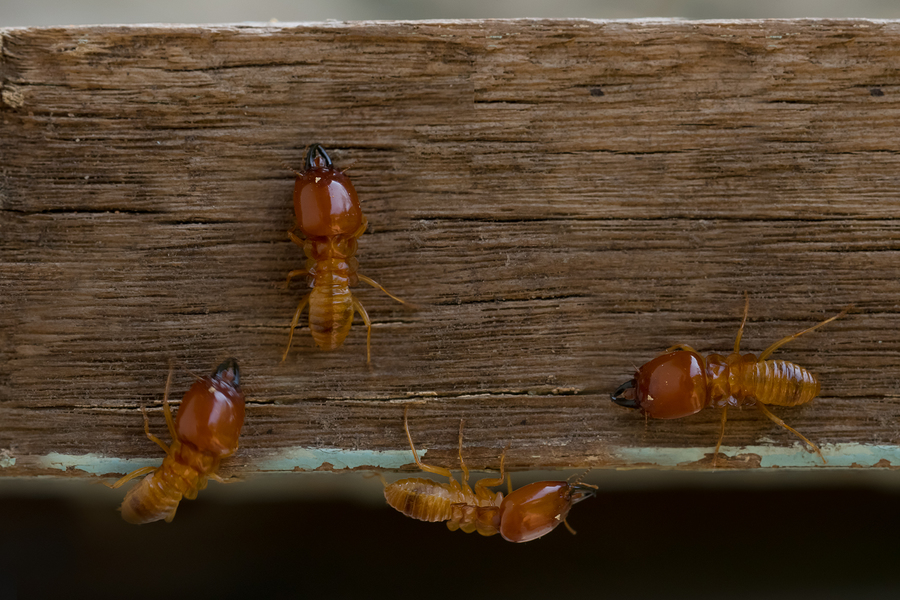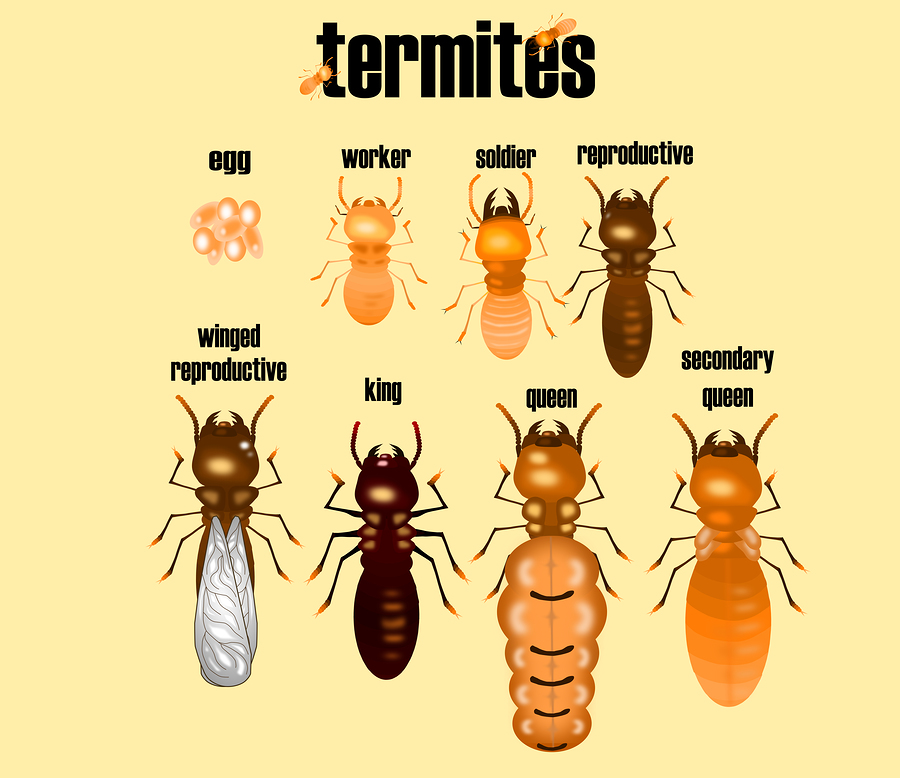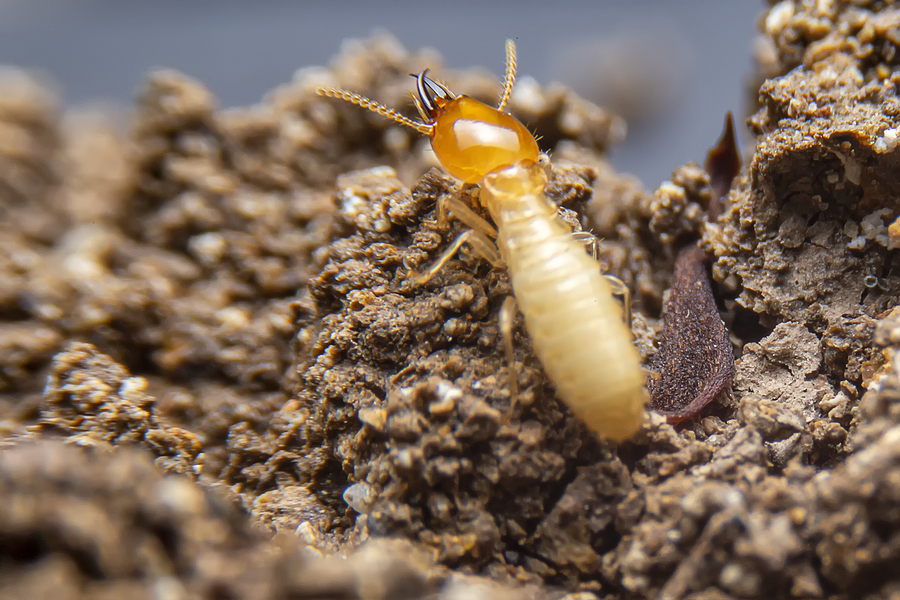What are termites?
Termites are social insects that live in large social colonies. The body color of termites ranges from pale brown to white. Termites are considered as soft-bodied pests. Termites make their habitat mostly in soil, undergrounds, and trees. Being a little insect, termites cause lots of significant damage. The scientific name of termite is “Isoptera.” Termites are one of the oldest insects that are present on this Earth. They work 24X7 hours and eat wood, and other cellulose contained materials. There are different termite control methods that you can use to get rid of them.
Special characteristic of termites
Certain exciting facts are related to termites, and you should know this.
- 15 to 20 eggs per minute are produced by some of the termites.
- The lifespan of queen termite is longer than other termites. Sometimes the queen termite can live for about 3 and 50 years.
- The total joined weight of termites on Earth is calculated at 445 million tons, whereas that of human beings is 350 million tons.
- A total of 2700 species of termites is known in the world.
- Termites make vibration for the communication purpose. The soldier termite bangs or taps on the wall of the tunnel, after feeling the threat to make alert other termites.
- Termites are considered to the hygienic pests as they spend lots of time grooming one another so that they remain safe from disease.
- Termites are “eusocial” insects that mean they live in the caste system. All the termite members have a different role as per their caste.
- Termites only destroy the wood materials, and soldiers and reproductive termites have to rely upon the worker for the food.

Types of termites
- Subterranean termites
They are the most common types of termites that are mostly found in the timber of buildings, fallen trees, and branches that remain in contact with soil. Subterranean termites require moisture for their survival. They make their nest in the soil near to the moisture-prone areas—mud tubes are created by these termites to reach the food source and protect themselves from open air.
2. Formosan termites
Formosan termites are known to be the most aggressive and voracious species of termites. These termites make their nest inside the wall of the building. They create large colonies that quickly damage the property. The length of these termites lies in between 12 to 15 millimeters. The Formosan termites are interested in the light; that’s why they make their nest close to windows, light fixtures, and window sills. They are difficult to control due to their aggressive nature.
3. Dampwood termites
Dampwood termites infest the wood that has high moisture content. These termites are large in size as compared to other termite’s species. Dampwood termites are mostly found outside in timbers that are in contact with soil. They form small colonies.
4. Drywood termites
The colonies of these termites constituted less than 1000 individuals. As per their name, these termites infest only dry woods and don not require any kind of moisture contact. drywood termites make their nest in the wooden roof material. They require high humidity for their survival.
5. Conehead termites
Conehead termites were previously known as “Tree Termites,” but after some time, they were renamed as “conehead termites” to remove the myth that they only live in the tree. These termites do not use tunnels for travelling; instead they walk on the ground just like ants and get spread quickly. They create their nest that has chewed wooden material as surface.
Who are among the family of termites?

- Reproductive termites
- Reproductive termites procreate.
- These termites often look different as they have dark coloured bodies.
- At the age of maturity, these termites have two pairs of wings that are of equal size and termed as alates.
- They establish new colonies after swarming flight and shed their skins.
- The queen termites can lay up to thousands of eggs in a day.
2. Worker termites
- The worker termites are soft bodies and do not have wings.
- The number of worker termites is large in the colony of termites.
- You will mostly see these termites under the infested wooden material.
- The immature termites come under the category of workers.
- The worker termites provide complete protection to the eggs and immature termites.
3. Soldier termites
- Soldier termites act as the protector of the colony.
- They are typically larger in size as compared to other termites.
- The mandibles and head of solider termites are larger than worker termites.
- They provide complete protection against predators.
Common infestation signs of termites
If termites are inside your house, then you must have noticed some of these signs.
- Dropping and discoloration of drywall.
- Hollow sound when you tap on the wooden structure.
- Crumbling and damaged wooden.
- Presence of mud tubes climbing the top of your house.
- You will found piles of wings that are left after the swarming process.
- Presence of pinpoint small holes in the wall.
- Stucking of windows and doors.
- Termites leave behind them frass material as their droppings.
- You will see the live flying termites.
Some DIY termite control methods

Some natural treatments are available for eradicating these termites. You can use this technique to get rid of them.
- Nematodes
They are tiny parasitic worms that quickly chew the number of termites. Releasing them in the infected place gives a positive result. They finish all the termites by their reproduction process. Using nematodes is an easy and practical way to get rid of termites.
- Vinegar
It is an easily available home product that controls the population of termites. You can prepare the termite killer by mixing lemons and vinegar in a spray bottle. Apply the mixture at the termite infested location. Being acidic in nature, this termite control method kills all the termites that come in its direct contact.
- Borates
It is also known as borax powder. You can use it either in the form of dust or by mixing it with water. Reapply the borax after some duration so that it reaches the maximum number of termites.
- Orange Oil
The orange oils contain d-limonene that causes them to die. The oil is prepared from the peel of the orange. This oil dissolves the exoskeletons of termites that make their body to lose moisture and proteins and make them die. It is one of the effective termite control methods that gives best results.
- Wet Cardboard
Two things are loved by termites. The first thing is water, and the second one is cellulose. To remove the termites from your home, take cardboard and sprinkle some water over the cardboard. Place the wet cardboard in the most place that where you see most of the termites. Termites will get settled on the cardboard as it becomes a buffet for them. When you notice that most of the termites have deposited over the cardboard, then take it out and burn it. You can repeat this process to eliminate all the termites.

